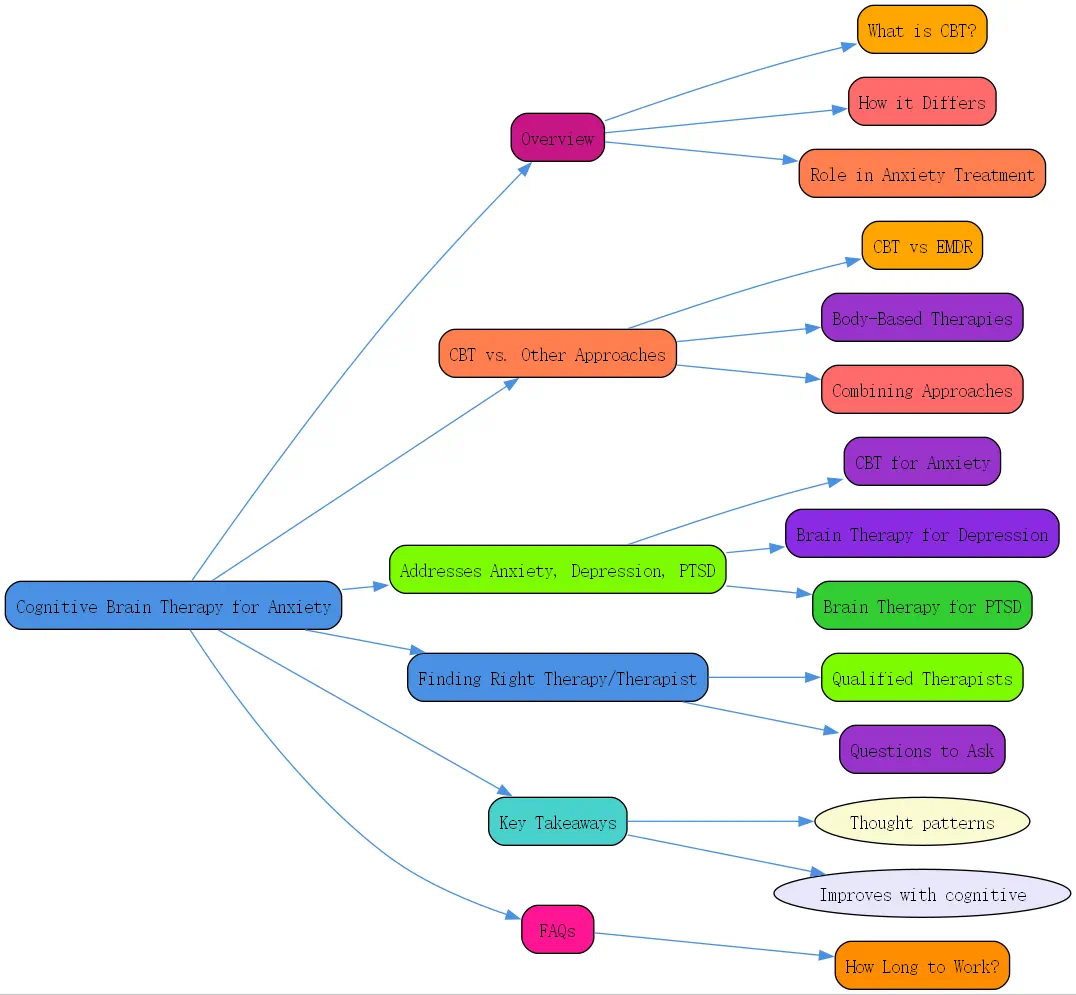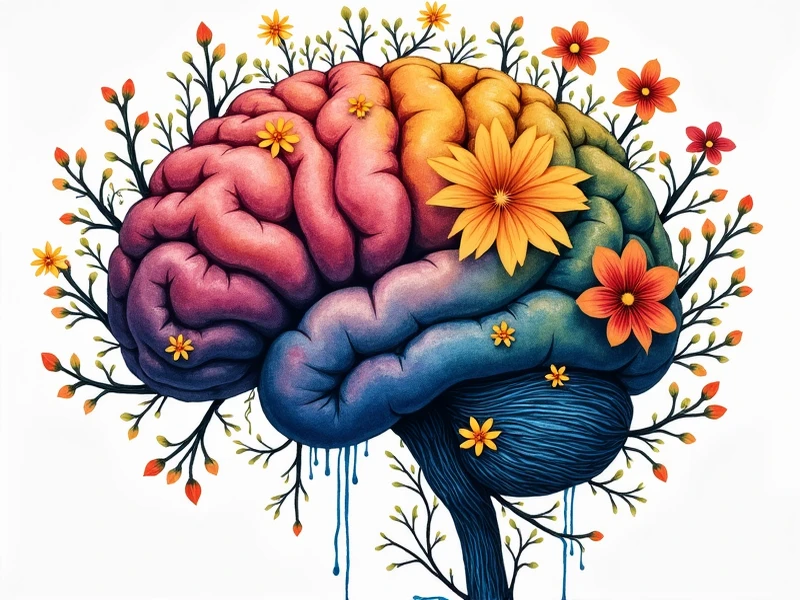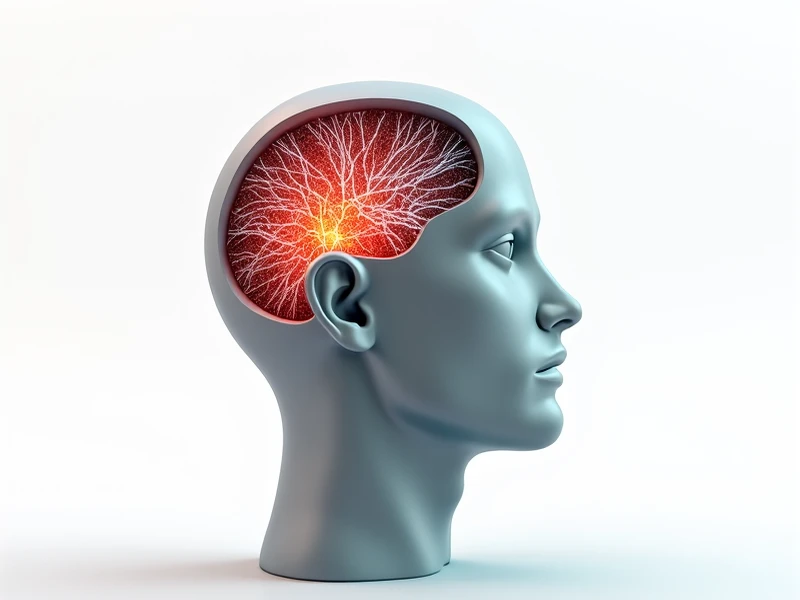Cognitive Brain Therapy for Anxiety: An Overview

Anxiety can feel like an overwhelming force that hijacks your thoughts and physical sensations. When traditional approaches fall short, cognitive brain therapy for anxiety offers a scientifically-backed pathway to recovery. At BrainTalking, we understand that finding the right therapeutic approach is crucial for addressing anxiety disorders effectively.
What is Cognitive Brain Therapy?
Cognitive brain therapy represents a “”top-down”” approach to treating mental health conditions like anxiety, depression, and trauma-related disorders. This methodology focuses on identifying and changing negative thought patterns that fuel anxiety symptoms. Unlike some other therapeutic approaches that might primarily target physical sensations or past experiences, cognitive brain therapy addresses the thinking processes that maintain and amplify anxiety.
The foundation of cognitive brain therapy lies in the understanding that our thoughts directly influence our emotions and behaviors. By examining and restructuring these thought patterns, patients can experience significant relief from anxiety symptoms. This approach is particularly effective because it provides patients with practical tools they can implement in their daily lives outside the therapy room.
When we experience anxiety, our minds often become caught in repetitive cycles of catastrophizing, black-and-white thinking, or excessive worry. Cognitive brain therapy helps break these cycles by teaching patients to recognize thought distortions and replace them with more balanced perspectives.
How it Differs from Other Therapies
While cognitive brain therapy for anxiety focuses primarily on thought patterns and behaviors, other therapeutic approaches may target different aspects of the anxiety experience. For instance, somatic or body-based therapies focus on resolving physical tension patterns and nervous system dysregulation that accompanies anxiety.
The cognitive approach differs in that it prioritizes conscious awareness and deliberate change of thought patterns. Through structured sessions, therapists guide patients to identify anxiety-provoking thoughts, challenge their validity, and develop healthier alternatives. This differs from psychodynamic therapies that might explore childhood experiences or unconscious motivations behind anxiety.
Another key distinction is that cognitive brain therapy is typically more structured and goal-oriented than some other therapeutic approaches. Sessions often involve specific exercises, homework assignments, and measurable outcomes to track progress.
The Role of Cognitive Brain Therapy in Anxiety Treatment
Cognitive brain therapy plays a crucial role in anxiety treatment by addressing the core thought patterns that maintain anxiety cycles. Research consistently shows that cognitive approaches produce significant improvement in anxiety symptoms, with success rates around 50-60% for various anxiety disorders.
For many patients, cognitive brain therapy provides a framework to understand their anxiety rather than just experiencing it as an overwhelming force. This increased understanding often leads to greater self-compassion and reduced shame about anxiety symptoms.
The skills learned through cognitive brain therapy become powerful tools that patients can utilize throughout their lives. As they practice recognizing and challenging anxious thoughts, many report feeling more empowered and less controlled by their anxiety.
Cognitive Brain Therapy vs. Other Approaches
Comparing Cognitive Therapy to EMDR
Eye Movement Desensitization and Reprocessing (EMDR) represents another evidence-based approach to treating anxiety, particularly when related to traumatic experiences. While cognitive brain therapy focuses on identifying and changing thought patterns through discussion and practice, EMDR incorporates bilateral stimulation (like eye movements or tapping) to help process distressing memories.
According to research from the VA, both approaches show similar effectiveness rates for treating trauma-related disorders, with approximately 53% of patients no longer meeting criteria for PTSD after three months of treatment. However, the patient experience differs significantly between these modalities.
Cognitive therapy typically requires more verbal processing and homework assignments, while EMDR may facilitate processing without extensive talking about traumatic experiences. For some patients, particularly those who find it overwhelming to verbally recount traumatic memories, EMDR might offer advantages over purely cognitive approaches.
However, cognitive brain therapy excels at providing patients with daily tools to manage anxiety symptoms and may be more accessible in many treatment settings. The best approach often depends on individual preferences, the nature of the anxiety, and practitioner expertise.
The Benefits of Body-Based Therapies

While cognitive brain therapy addresses the “”top-down”” approach through thoughts, body-based or somatic therapies work from the “”bottom-up”” by addressing physical sensations and nervous system regulation. These approaches recognize that anxiety lives in both mind and body, with physical symptoms often persisting even after cognitive understanding.
Body-based approaches like Somatic Experiencing help patients develop awareness of physical tension patterns and learn techniques to release stress held in the body. For many anxiety sufferers, these approaches provide relief when cognitive methods alone haven’t fully resolved symptoms.
Research on somatic approaches shows promising results, with studies indicating up to 67% of participants experiencing reduced PTSD symptoms after somatic therapy. These approaches are particularly beneficial for patients who struggle with physical manifestations of anxiety like muscle tension, digestive issues, or sleep disturbances.
The growing body of research on the polyvagal theory and nervous system regulation continues to influence how therapists approach anxiety treatment, recognizing that cognitive understanding alone may not fully resolve physiological anxiety responses.
Combining Cognitive and Somatic Approaches
Many experienced therapists at BrainTalking recognize that the most effective approach to anxiety treatment often combines cognitive brain therapy with somatic techniques. This integrated approach addresses both thought patterns and physical manifestations of anxiety.
For example, a therapist might help a patient identify anxious thoughts while also teaching breathing techniques and body awareness practices to regulate the nervous system. This comprehensive approach tends to yield better results than either methodology alone, especially for complex or long-standing anxiety.
The integration of approaches also acknowledges individual differences in how anxiety presents. Some people experience anxiety primarily through racing thoughts, while others might notice physical symptoms first. By addressing both aspects, treatment can be tailored to each person’s unique experience.
Combining approaches also provides multiple tools for managing anxiety in different situations. Cognitive techniques might work well during planning or reflection, while somatic techniques can be invaluable during acute anxiety when thinking clearly becomes difficult.
How Cognitive Brain Therapy Addresses Anxiety, Depression, and PTSD
Cognitive Brain Therapy for Anxiety
When applied specifically to anxiety disorders, cognitive brain therapy focuses on identifying and challenging the catastrophic thinking patterns that fuel anxiety. Many anxiety sufferers engage in what therapists call “”cognitive distortions”” – thinking patterns that exaggerate threats and underestimate coping abilities.
Common techniques include thought records, where patients document anxious thoughts and evidence for and against them, and cognitive restructuring, which helps develop more balanced perspectives. For example, someone with social anxiety might catastrophize about a presentation, thinking, “”I’ll definitely mess up and everyone will think I’m incompetent.”” Through cognitive brain therapy, they learn to challenge this thought with evidence and develop a more realistic perspective.
Exposure techniques often supplement cognitive work for anxiety disorders. Gradual, supported exposure to anxiety-provoking situations helps patients learn through experience that they can manage anxiety and that feared outcomes rarely materialize. This behavioral component reinforces the cognitive work of challenging anxious predictions.
Brain Therapy for Depression
Depression often involves persistent negative thoughts about oneself, the world, and the future – what cognitive therapists call the “”cognitive triad.”” Depression therapy using cognitive approaches targets these thought patterns by helping patients recognize how negative interpretations contribute to depressed mood.
Unlike anxiety, which often focuses on future threats, depression frequently involves rumination about past events or perceived failures. Cognitive brain therapy helps patients identify how these rumination patterns maintain depression and develop strategies to redirect attention more productively.

Another key aspect of cognitive work for depression involves behavioral activation – gradually increasing engagement in meaningful and pleasurable activities despite low motivation. This behavioral component helps break the cycle of withdrawal and isolation that often worsens depression symptoms.

When combined with medication, cognitive approaches to depression show particularly strong results. While medication can help stabilize mood and energy levels, cognitive therapy provides tools to address the thinking patterns that contribute to depression, creating more sustainable improvement.
Brain Therapy for PTSD
Trauma fundamentally affects how the brain processes information and responds to perceived threats. Cognitive brain therapy for PTSD helps patients understand how traumatic experiences have shaped their beliefs about safety, trust, and self-worth, and works to update these beliefs based on current reality rather than past trauma.
One effective cognitive approach for PTSD is Cognitive Processing Therapy (CPT), which helps patients identify “”stuck points”” – distorted beliefs that developed after trauma, such as “”I can never trust anyone again”” or “”It was my fault.”” By examining these beliefs and considering alternative perspectives, patients can reduce the power of these thoughts.
Cognitive approaches to PTSD often need to be balanced with strategies for managing heightened physiological arousal. Many trauma survivors benefit from learning grounding techniques to manage flashbacks or dissociation before diving deeply into cognitive work on traumatic memories.
The effectiveness of cognitive brain therapy for PTSD is well-established, with studies showing around 53% of patients no longer meeting criteria for PTSD after three months of treatment. However, complex trauma may require longer treatment and multiple approaches for full recovery.
Finding the Right Cognitive Brain Therapy and Therapist
Identifying Qualified Therapists
Finding a qualified therapist who specializes in cognitive brain therapy requires some research. While many therapists incorporate cognitive elements in their practice, those with specific training and certification in cognitive approaches will likely provide the most effective treatment.
Psychology Today’s therapist directory offers a helpful starting point. Users can filter therapists by location, specialty (like anxiety or trauma), and therapeutic approach. When reviewing potential therapists, look for specific mentions of cognitive-behavioral therapy, cognitive processing therapy, or other cognitive approaches in their profile.
It’s important to verify a therapist’s qualifications and training. For cognitive therapy specifically, look for therapists who have completed formal training programs in CBT or related approaches. Some therapists may be certified by organizations like the Academy of Cognitive and Behavioral Therapies, indicating advanced training and supervision in these methods.
Questions to Ask Potential Therapists
When considering a therapist who offers cognitive brain therapy for anxiety, depression, or PTSD, several questions can help determine if they’re a good fit:
1. What specific training have you completed in cognitive therapy approaches? 2. How do you typically structure treatment for anxiety/depression/PTSD? 3. What is your approach to combining cognitive work with other techniques? 4. How do you measure progress in therapy? 5. How long does treatment typically last for conditions similar to mine?
The therapeutic relationship significantly impacts treatment outcomes, so it’s also important to assess whether you feel comfortable with and respected by the therapist. Many offer initial consultations specifically to determine fit before committing to ongoing treatment.
Other Therapeutic Options
While cognitive brain therapy offers an effective approach for many people, it’s not the only option. Medication prescribed by psychiatrists or primary care physicians can provide significant relief for anxiety, depression, and PTSD symptoms. According to research, about 42% of people with PTSD experience significant improvement with medication alone.
Narrative therapy offers another approach, particularly beneficial in group settings. This method helps people reshape the stories they tell about their experiences and identity, which can be particularly powerful for trauma survivors who may have internalized shame or self-blame.
Other approaches gaining popularity include brain spotting, neurofeedback, mindfulness-based interventions, and acceptance and commitment therapy. While these may not have as extensive research support as cognitive approaches, they show promising results for many patients.
The Importance of Combining Different Therapy Approaches
At BrainTalking, we emphasize that the most effective treatment often combines multiple approaches tailored to each person’s unique needs. For example, someone with anxiety might benefit from cognitive techniques to address worry thoughts, somatic exercises to manage physical tension, and possibly medication to reduce overall arousal.
Customizing therapy means recognizing that what works well for one person might not work for another. Some people respond better to highly structured approaches, while others benefit from more exploratory or experiential methods. The best therapists can adapt their approach based on patient response and preferences.
Lifestyle elements also play a crucial role in mental health recovery. Regular exercise, adequate sleep, nutrition, and social connection all contribute significantly to anxiety reduction. Effective therapy often addresses these lifestyle factors alongside specific therapeutic techniques.
Key Takeaways About Cognitive Brain Therapy for Anxiety
- Cognitive brain therapy addresses the thought patterns that maintain anxiety, depression, and PTSD symptoms
- Research shows approximately 53% of people experience significant improvement with cognitive approaches
- Combining cognitive techniques with body-based approaches often provides more comprehensive relief
- Finding a qualified therapist with specific training in cognitive approaches improves treatment outcomes
- Treatment should be customized to individual needs, possibly including medication and lifestyle changes
- Therapy effectiveness should be measured by symptom reduction and improved functioning in daily life
Frequently Asked Questions
How long does cognitive brain therapy take to work for anxiety?
Cognitive brain therapy for anxiety typically shows measurable results within 12-16 sessions, though some improvement may be noticed within the first few weeks. More severe or complex anxiety cases may require longer treatment. Many therapists recommend weekly sessions initially, possibly transitioning to less frequent meetings as symptoms improve. The skills learned in cognitive brain therapy continue to strengthen with practice, often leading to ongoing improvement even after formal therapy ends.




